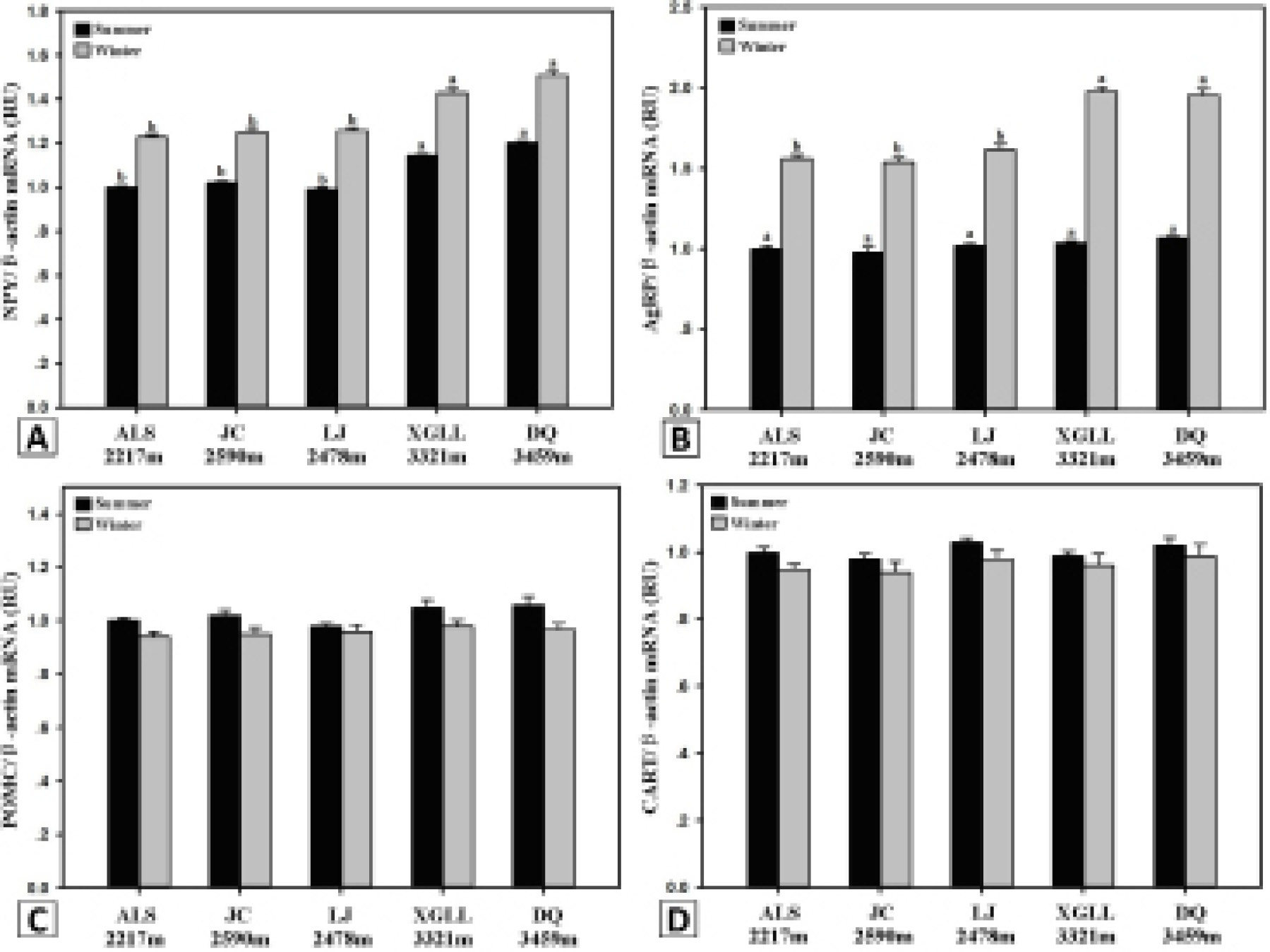Higher Altitude and Lower Temperature Regulate the Body Mass and Energy Metabolism in Male Eothenomys miletus
Higher Altitude and Lower Temperature Regulate the Body Mass and Energy Metabolism in Male Eothenomys miletus
Yue Ren1, Peng-Fei Liu2, Wan-Long Zhu1,*,Hao Zhang1 and Jin-Hong Cai1
Changes of body mass in Eothenomys miletus from five areas in different seasons. Different superscripts in each row indicate significant difference (P < 0.05) among different areas.
Changes of serum leptin levels in Eothenomys miletus from five areas in different seasons. Different superscripts in each row indicate significant difference (P < 0.05) among different areas.
Changes of resting metabolic rate in Eothenomys miletus from five areas in different seasons. Different superscripts in each row indicate significant difference (P < 0.05) among different areas.
Changes of non-shivering thermogenesis in Eothenomys miletus from five areas in different seasons. Different superscripts in each row indicate significant difference (P < 0.05) among different areas.
Changes of food intake in Eothenomys miletus from five areas in different seasons. Different superscripts in each row indicate significant difference (P < 0.05) among different areas.
Changes of NPY (A), AgRP (B), POMC (C) and CART (D) in Eothenomys miletus from five areas in different seasons. Different superscripts in each row indicate significant difference (P < 0.05) among different areas.
















